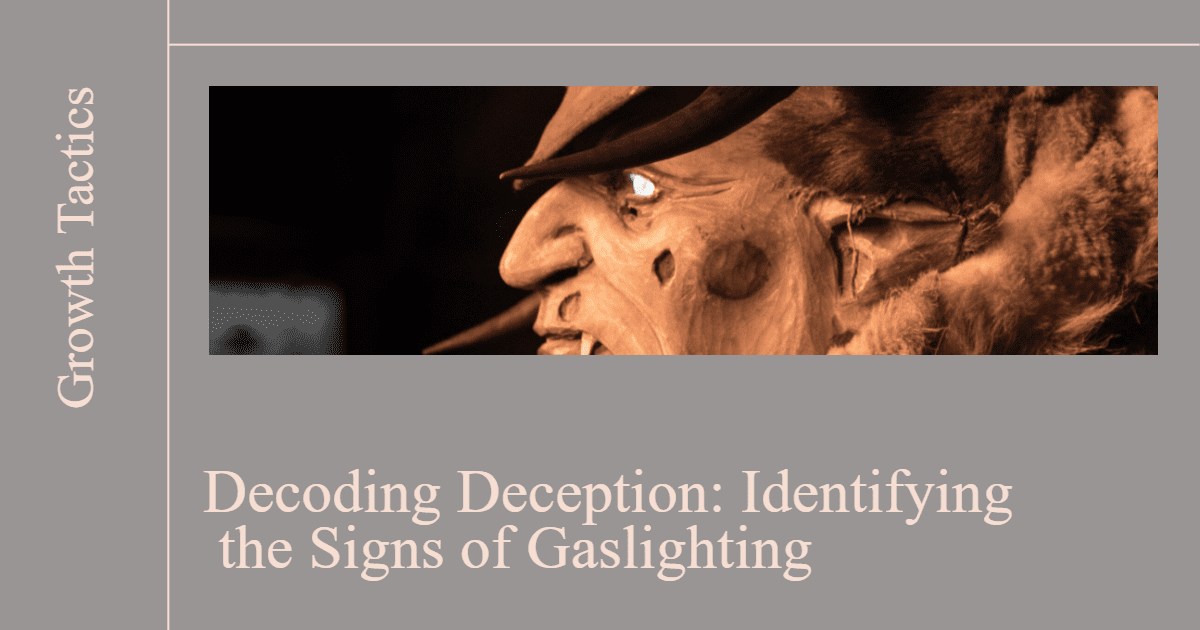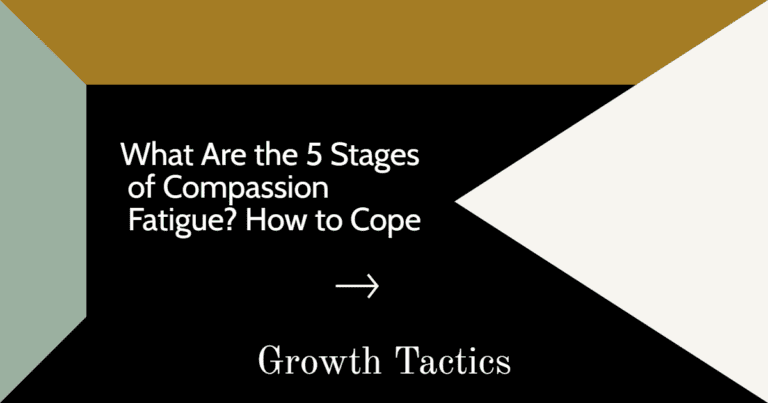Gaslighting is a form of emotional abuse that can happen in romantic relationships, friendships, and even in the workplace. It is a manipulation tactic used by the abuser to make you question your reality and sanity. In this article, we will discuss the signs of gaslighting, examples of this abusive behavior, and how to deal with it.
Jump To Section
Gaslighting in a Relationship: Red Flags and Examples
Gaslighting in a relationship can make you feel like you’re never good enough, and your partner may try to convince you that your friends don’t care about you. This type of emotional abuse can cause you to question your self-worth and self-esteem.
Some examples of gaslighting in a relationship include:
- Your partner accusing you of things you never did
- They deny things they said or did, even when you have proof
- Your partner constantly questioning your memory or sanity
Signs of Gaslighting: Recognizing the Abuse
Recognizing the signs of gaslighting can be challenging, but it’s essential to protect yourself. Here are 10 signs that can help you spot gaslighting:
1. Constant Lying
The person keeps lying, even when the truth is obvious. They are relentless in denying facts. This behavior is designed to wear you down.
Over time, you might start to question what’s true and what’s not. It’s a tactic to undermine your confidence. Keeping a written record of events can help you stay grounded in reality.
2. Denying Conversations
They deny having said things, even when you have proof. This makes you doubt your memory. When someone denies your shared experiences, it shakes your trust.
You might feel like you’re going crazy. Recording important conversations or writing things down can help you keep track of what’s real.
3. Shifting Blame
The gaslighter always blames you for their actions. They refuse to take responsibility. For example, if they’re late, it’s your fault for not reminding them.
This constant shifting of blame makes you doubt your role in the relationship and erodes your sense of self. Be mindful of owning only what’s truly your responsibility.
4. Minimizing Your Feelings
They make you feel like your emotions aren’t valid. They call you “too sensitive” or “crazy.” This tactic belittles your experiences and feelings. It’s meant to make you second-guess your reactions. Remember, your feelings are valid; they are a reflection of your experience and should be respected.
5. Isolation
They try to cut you off from friends, family, and support systems. This makes you more dependent on them. Isolation is a powerful tool to control someone.
Without a support network, you can feel trapped and more reliant on the gaslighter. Stay connected with your loved ones as much as possible. Your support system is essential for your well-being.
6. Confusing Information
They give confusing or contradictory information. This keeps you off balance and unsure of yourself. One moment they’re saying one thing, the next, it’s something else entirely.
This tactic is designed to make you feel confused and unsure of your own ability to reason. Keeping notes and asking for clarification can help you navigate this maze of misinformation. Trust your discernment.
7. Rewriting History
They twist past events to fit their narrative. This distorts your perception of reality. For example, they may claim the argument last week was your fault when, clearly, it was not.
By constantly changing the story, they aim to make you doubt your memory and decisions. Keeping a journal of events and your feelings can serve as a solid reference, grounding you in your own truth.
8. Undermining Your Thoughts
The gaslighter acts as if they know better than you. They discredit your thoughts and beliefs. They might say, “You don’t understand” or “Your ideas are always off.”
This erodes your confidence and makes you second-guess your judgment. Remember, your thoughts and beliefs are valuable. Trust in your own insight and don’t be afraid to stand firm in your convictions.
9. Projecting Their Behavior
They accuse you of doing what they’re doing. This projection shifts attention away from their actions. For example, they might accuse you of being dishonest when they’re the ones lying.
This tactic is designed to make you defensive and divert focus from their behavior. Stay calm, recognize the projection for what it is, and don’t be drawn into defending yourself.
10. Creating Doubt
You start questioning your own judgment and sanity. They make you doubt what you know is true. This can be the most damaging aspect of gaslighting. Over time, you may start to believe their version of reality over your own.
To combat this, regularly validate your experiences and feelings with trusted friends, family, or a counselor. Remember, your judgment is sound, and your truth is important.
You have the strength within to recognize and respond to gaslighting. Trust in your perspective and seek the support you need.
Gaslighting Techniques: How Abusers Manipulate Their Victims
Gaslighters use many tricks to control their victims. By knowing these tricks, you can see if someone is gaslighting you or someone you know. Here are some common gaslighting techniques:
Lying or Exaggerating to Create Confusion
Gaslighters tell big lies or twist the truth. This makes you feel confused and unsure. You stop trusting your own memory. Instead, you rely more on the gaslighter for what’s real.
Denying or Changing Facts
Gaslighters often deny the truth or change facts, even if there’s proof. They make you doubt your memory. Over time, you start depending on the gaslighter’s version of reality.
Using Your Insecurities Against You
Gaslighters spot your insecurities and use them to control you. They make you feel not good enough or unworthy. This way, you accept the gaslighter’s bad behavior more easily.
Isolating You from Friends and Family
Gaslighters try to cut you off from loved ones who might support you. They create fights or make you think your friends and family are not trustworthy. Isolation makes you more dependent on the gaslighter.
Manipulating Your Emotions
Gaslighters mess with your feelings to gain power. They might make you feel guilty, act like a victim, give you the silent treatment, or intimidate you. Their goal is to keep you scared and uneasy.
Projecting Their Behavior onto You
Gaslighters accuse you of behaviors they are doing themselves. For example, they call you dishonest when they are the ones lying. This confusion keeps you off balance.
Trivializing Your Feelings and Concerns
Gaslighters dismiss or belittle your feelings. They make you think your emotions don’t matter. This causes you to doubt your feelings and think you are overreacting.
Understanding these techniques empowers you. Remember, your perspective matters. Stay strong and seek the truth.
How to Deal with Gaslighting: Tips for Victims
If you think you’re being gaslighted in your relationship, it’s vital to take action. Protect yourself and put an end to the abuse. Here’s how:
1. Educate Yourself About Gaslighting
Knowledge is power. Learn about gaslighting and its signs. Understand its techniques and how it works. This will help you recognize what’s happening and take steps to address it.
2. Trust Your Instincts and Feelings
Listen to your gut. If something feels wrong or you’re always questioning your sanity, trust your instincts. Your feelings are important tools to recognize gaslighting and protect yourself.
3. Seek Support
Don’t go through this alone. Talk to friends, family, or a mental health professional. They can validate your feelings and guide you through coping with the situation.
4. Set Boundaries
Establish and maintain clear boundaries. Let the gaslighter know your limits. Be firm in enforcing them. Limit contact if necessary, and avoid conversations where gaslighting occurs.
5. Document Instances
Keep a record of gaslighting behavior. Save texts, emails, and voicemails. This documentation can serve as evidence if you decide to seek legal action or need to prove the abuse.
6. Practice Self-Care
Gaslighting can take a toll on your mental health. Prioritize self-care. Engage in activities that bring you joy. Seek therapy. Take time to rest and recharge.
7. Consider Ending the Relationship
If gaslighting continues and your efforts don’t work, it may be necessary to end the relationship. This can be hard, but your mental health and safety are top priority.
8. Develop a Safety Plan
If you decide to leave, create a safety plan. Plan steps to protect yourself. Find a safe place to stay. Secure your finances. Inform trusted friends or family about your situation.
9. Build Your Self-Confidence
Work on building your confidence. Engage in activities that make you feel strong and capable. Remind yourself of your strengths and achievements. This can counteract the negative effects of gaslighting.
10. Avoid Self-Blame
Remember, gaslighting is not your fault. Don’t blame yourself for the actions of the gaslighter. Focus on what you can control and take steps to protect yourself.
11. Educate Others
Share your experience with trusted friends or family members. Educate them about gaslighting so they can understand and support you better. This can also help raise awareness and prevent others from becoming victims.
12. Practice Mindfulness
Stay present. Practice mindfulness techniques such as deep breathing, meditation, or yoga. This can reduce stress and help you stay grounded.
13. Create Positive Affirmations
Write down positive affirmations. Repeat them to yourself daily. Statements like “I am strong,” “I trust myself,” and “I deserve respect” can reinforce your self-worth and combat negative messages.
By following these steps, you can take control of your life. Start the healing process. You deserve respect and kindness. Remember, it’s never too late to seek help and support.
Wrapping It Up
In conclusion, gaslighting is a form of emotional abuse that can have serious consequences on a person’s mental health. Recognizing the signs of gaslighting and seeking help can help victims regain their self-esteem and regain control of their lives.








